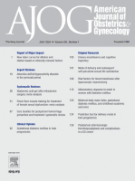No increase in rates of early-onset neonatal sepsis by non-group B Streptococcus or ampicillin-resistant organisms - 03/09/11
Abstract |
Objective: We assessed the impact of a risk-based approach to group B Streptococcus (GBS) prophylaxis on the rates of early-onset neonatal sepsis (EONS). Study Design: A retrospective cohort study of neonates born at a tertiary-care hospital from 1990 to 1996 was performed. Cases of EONS were identified among neonates born in a period without GBS prophylaxis (1990-1992) and compared with those born in a period with GBS prophylaxis (1993-1996). The antibiotic susceptibility data on each organism isolated in the blood culture were obtained. Results: In the period without prophylaxis, 99 cases of EONS were identified among 25,934 neonates for a rate of 3.8 per 1000 births. In the period with prophylaxis, 90 cases of EONS occurred among 34,262 neonates for a rate of 2.6 per 1000. The rate of GBS-EONS significantly decreased between the 2 periods (from 1.9 to 1.1, P = .01). There was a trend toward a decrease in the rate of EONS caused by non-GBS gram-positive organisms (from 1.2 to 0.7, P = .06). There was no significant increase in the rate of EONS caused by gram-negative or ampicillin-resistant organisms. Conclusions: A risk-based approach to GBS prophylaxis reduced the incidence of GBS-EONS at a tertiary-care hospital. This decrease was not accompanied by an increase in the incidence of EONS by non-GBS or ampicillin-resistant organisms. (Am J Obstet Gynecol 2001;185: 854-8.)
Le texte complet de cet article est disponible en PDF.Vol 185 - N° 4
P. 854-858 - octobre 2001 Retour au numéroBienvenue sur EM-consulte, la référence des professionnels de santé.
L’accès au texte intégral de cet article nécessite un abonnement.
Déjà abonné à cette revue ?

